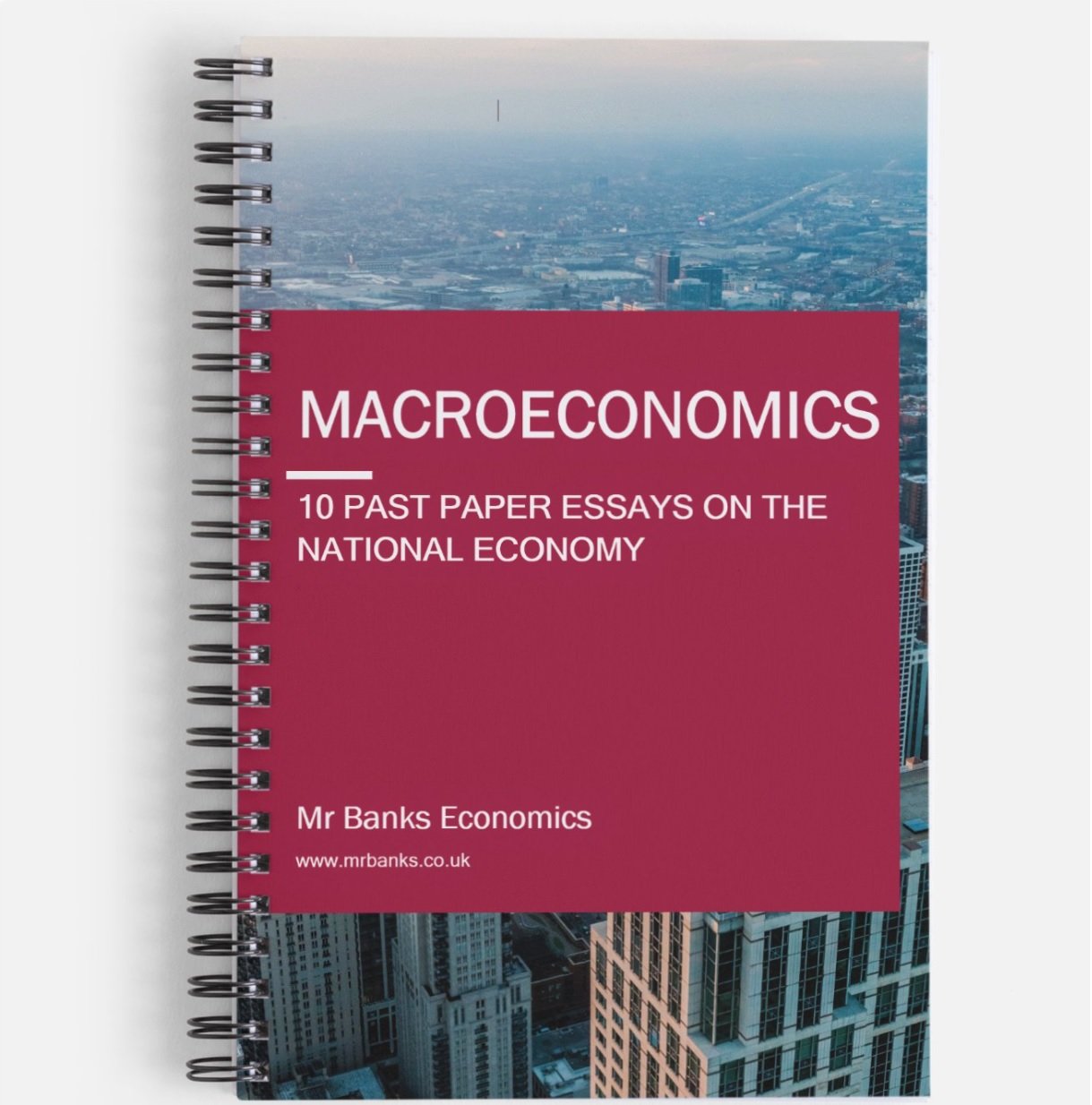A-Level Economics Model Answers
“A significant increase in unemployment seems inevitable and, in the short run, there is not much that a government can do about it.’
Evaluate alternative measures which can be used to reduce unemployment. (25 marks)”
Here is a question and answer from the national economy section of the A-level Economics syllabus.
This question is an ‘evaluate’ question - the type of question where students have to write a long essay. This question shows the examiner that your knowledge of economics and your ability to apply it to an economic problem.
You have to ensure that when you answer these questions you included good depth and evaluation skills: otherwise, you’ll lose marks.
THE FREE ESSAY PLAN BELOW CAN BE USED AS A GUIDE TO HELP YOU WRITE YOUR RESPONSE.
‘A significant increase in unemployment seems inevitable and, in the short run, there is not much that a government can do about it.’
Evaluate alternative measures which can be used to reduce unemployment. (25 marks)
The question asks you to think about which ways can be used to reduce unemployment. You’ll need to think about the structure; there are many ways you could structure this.
Here is an example of how you could approach this question.
Remember to insert your diagram!
FREE Model Answer Guide - Information in extract below
Possible Definitions
Demand-side policy
Unemployment in a country is measured by counting the number of those in the labour force who are without work: that is, the number of people who are not working who are fit, able and actively looking for work at current market wage rates.
You could also define the different types of unemployment: cyclical, strucutral, seasonal etc..
Apply information in the extract to the problem of unemployment
Extract mentions consumer spending and real GDP
How are real GDP and unemployment related? You could use the circular flow of income model help you explain this
Apply a possible solution based on the information from the extract
Could the government’s approach be to try and increase real GDP (which may benefit unemployment)?
What policies might they use to achieve this e.g. expansionary fiscal policy?
How might the outcome change depending on the state of the economic cycle e.g. negative output gap, positive output gap?
Draw a diagram and explain it step by step
What might the success of government spending depend on?
E.g. multiplier effect, how large the spending is, the current state of the budget
What about structural unemployment?
Why might policies to reduce structural unemployment look different to policies designed to reduce cyclical unemployment?
What are the benefits and costs of such policies? Why might it not work?
Remember to weigh up how important you think these policies are for the UK when trying to achieve a sustainable economy - remember there are other macroeconomic indicators to consider!
Diagrams you could use
AD/AS
PPF
Extract information
1.
The 15 economies of the eurozone (those countries that use the euro as a currency) contracted in the second quarter of 2008, experiencing growth of –0.2%. A recession in the eurozone economies will reduce UK exports and lead to lower economic activity in the UK. However, the effect of the decline in exports upon the balance of payments should be offset by a fall in foreign imports as growth in the UK slows and the sterling exchange rate falls. The pound reached a low against the euro in April 2008 and has fallen by over 5% against the US dollar during the past month. A measure of the pound’s exchange rate, the sterling exchange rate index, stood at 104.24 on the 1 January 2007 but its value closed at 91.22 on the 21 August 2008. This fall in the value of the pound will help to improve the competitiveness of UK firms and should lead to a reduction in the deficit on the balance of trade in goods and services.
2.
The longest period of sustained economic growth in Britain’s history has come to an end. The latest official statistics showed zero growth for the UK economy between April and June 2008. After 63 quarters (almost 16 years) of uninterrupted economic growth, the United Kingdom economy has ground to a halt. Figures show that the services sector, the backbone of the UK economy, grew by just 0.2%, while manufacturing output fell by 0.8% and household spending dropped by 0.1%. City economists said it was overseas trade which had helped to prevent the economy going into recession in the first half of 2008. The recent fall in the value of the pound should help UK exporters, whose goods will be cheaper overseas, but it may also add to inflationary pressures, making it more difficult for the Bank of England to cut interest rates.
Source: news reportsWant the full model answer?
10 Past Papers with Model Answers on the National Economy
Written by an experienced Economics tutor
Full model answers with diagrams
Designed for A-level Economics students studying AQA or Edexcel syllabus
Physical booklet
£30.00
All orders will be delivered within 7 days.


